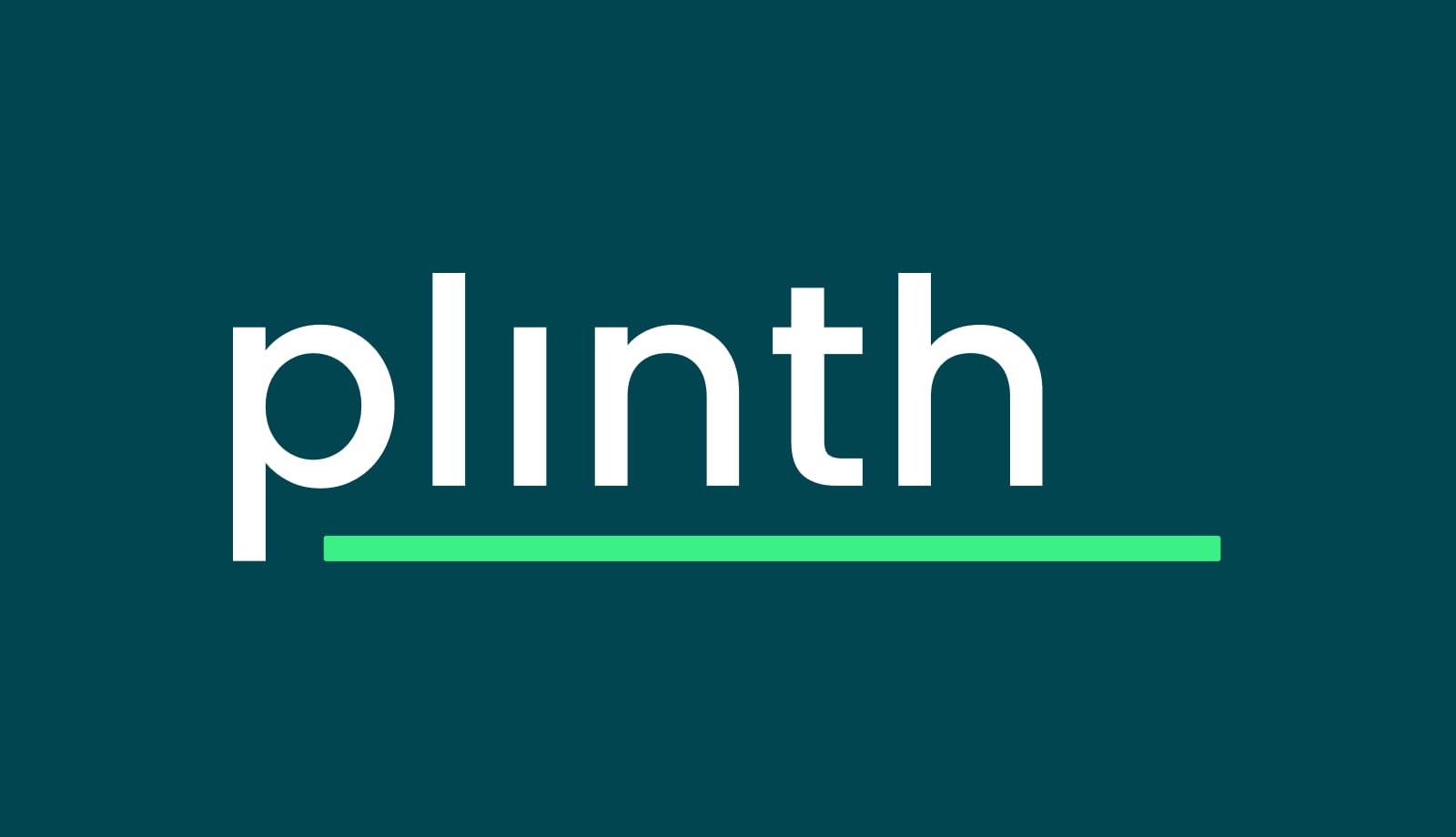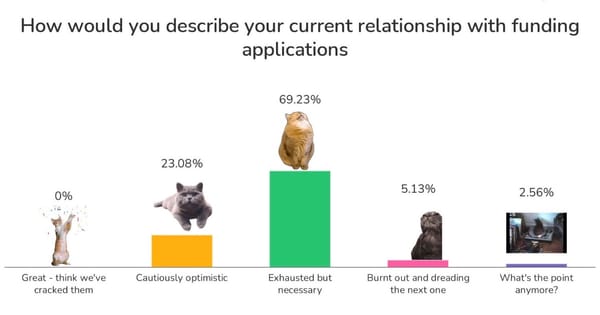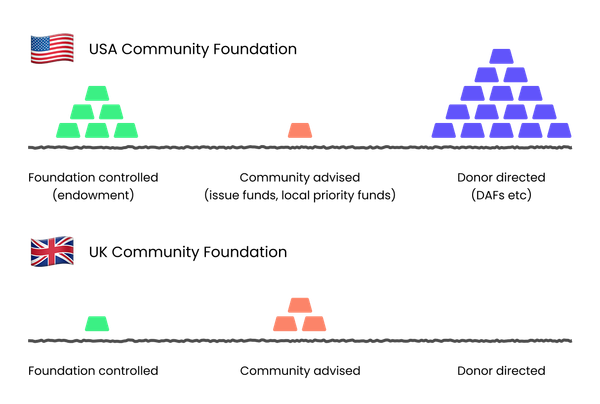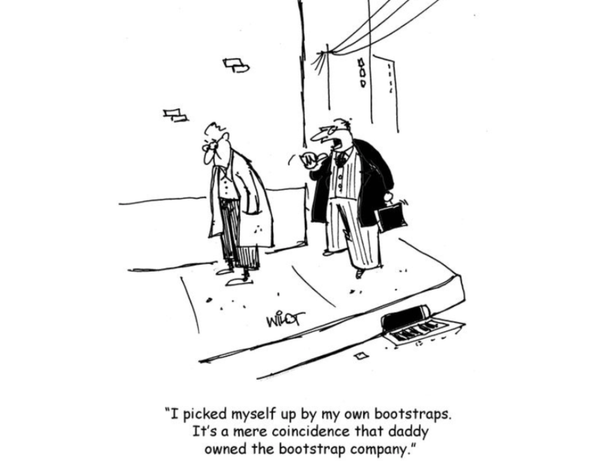How our AI Grant Writer tool works

You might have guessed, but for our AI Grant Writing tool, we are using AI to make it all work. When we tell people this, they come up with lots of questions such as:
- What is AI?
- How does it work?
- How do you make the answers personalised to us?
- Doesn't AI quite often just make things up?
- What about privacy concerns?
The point of this article is to explain how we do it all, which should answer all of those questions.
What is AI and how does it work?
When most people think of AI today, they think of ChatGPT. This is an example of a kind of AI called Generative AI, which is what we are using in our tool. So first we are going to explain how ChatGPT works.
ChatGPT uses two things to guess what the next word should be. The first thing is the question you ask. The level of detail in this question massively affects what comes out the other end. A bit like if you asked someone to write down a national anthem, you would get a different answer than if you asked someone to write down “La Marseillaise”. This text is called your “prompt”, and there is a whole new industry emerging called “prompt engineers” who specialise in giving ChatGPT the best possible prompt to get the answer you want.
The second thing that it uses is its “training data”. This is all of the information that it has seen beforehand, which it has stored in a massive database (using some very clever maths). This is essentially its memory. In the example above, it would be no good telling someone to write down La Marseillaise, if it had never heard of it.
This is where it gets interesting. The free ChatGPT model that most people will have used is just one example of a Generative AI model. There are lots of different types of models, not just provided by OpenAI (the non-profit behind ChatGPT). These are all trained on slightly different training data and with a slightly different aim - e.g. one might be trained to provide shorter answers than another.
How does Plinth use that to write grant applications?
In building this tool, we have aimed to make each application as personalised to you as we could to help you to tell the story of why your organisation deserves the funding.
However, this hasn’t been straightforward. If we were just to put questions into ChatGPT from the grant application, it would respond with nicely written paragraphs that would answer the questions, however, they would be quite generic and wouldn’t necessarily help you to win a grant. This is because the prompt isn’t detailed enough and there will be very little in its training data that is relevant to you. Worse than that though, because it is using less information at the beginning, it can just start making things up from its training data that might either be untrue or not at all relevant to your answer.
On top of this, if we were using the free version of ChatGPT, anything we would put in would be stored in its training data, which could be a breach of privacy if we were sharing some of your private data (obviously not something we want!).
So to get around this, we have done some quite complicated prompt engineering. In fact, we are putting in 6 different steps using multiple Large Language Models (LLMs) to then build up the answer.
Step 1 - Choosing the model
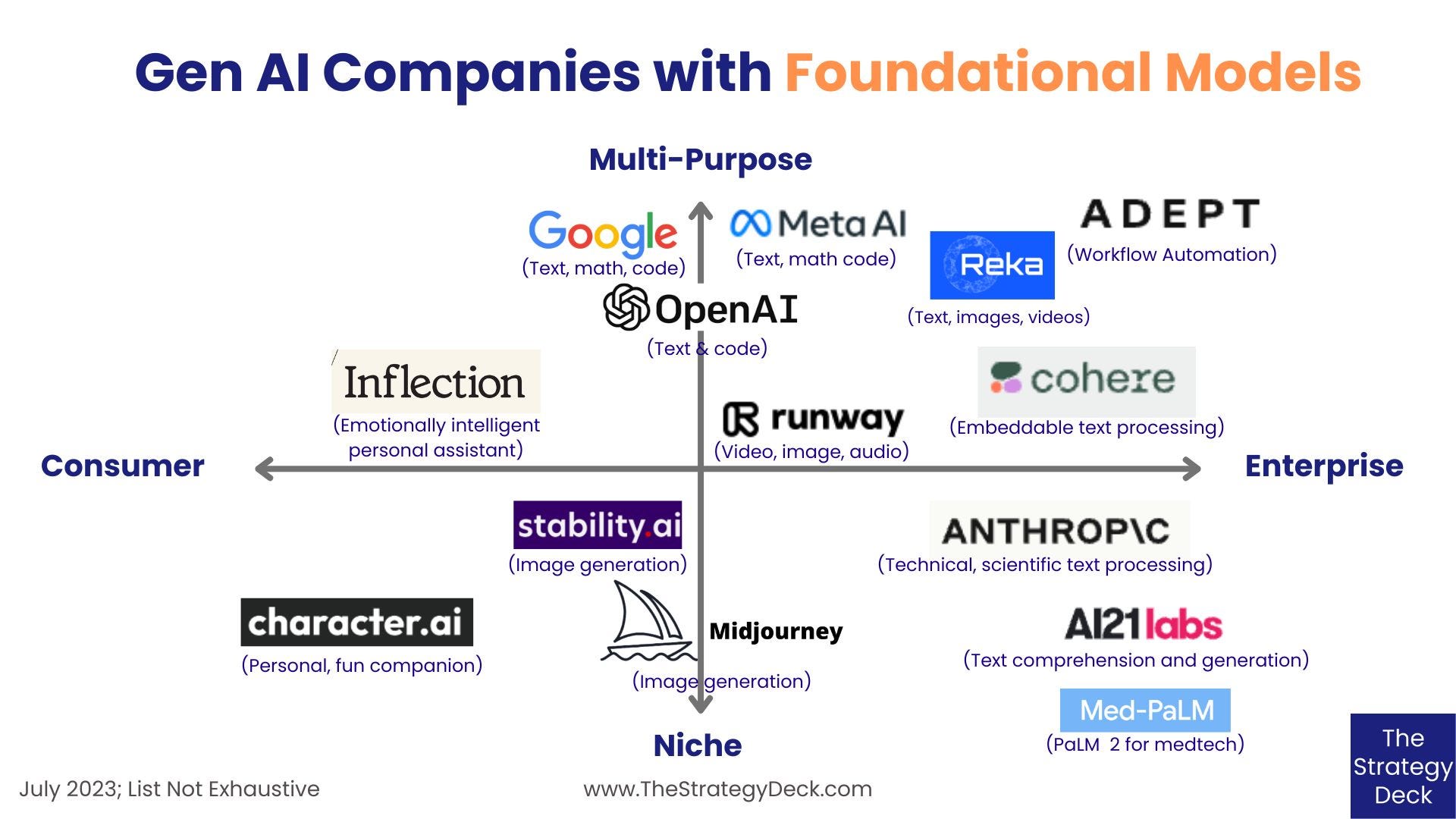
When choosing the model, the most important thing for us is privacy. We only use models that won’t use what we upload as training data. This keeps everything nice and secure for privacy purposes.
Next, we want to think about what each model is good at and the cost of each model. To do this we test out each of our steps below against their responses to see which one is the best value for money.
Step 2 - Understanding the grant
Before we even start asking questions about your project, we first need to understand the grant requirements. For each grant listed on the site, we feed into the models the grant descriptions and requirements. This is then summarised in a standardised way that we can then save to be used in later steps.
Step 3 - Understanding the questions
For each question in the application form, we work out what type of question it is - such as a short answer question or a long narrative-style question. This is based on the type of the question and how the form has been structured.
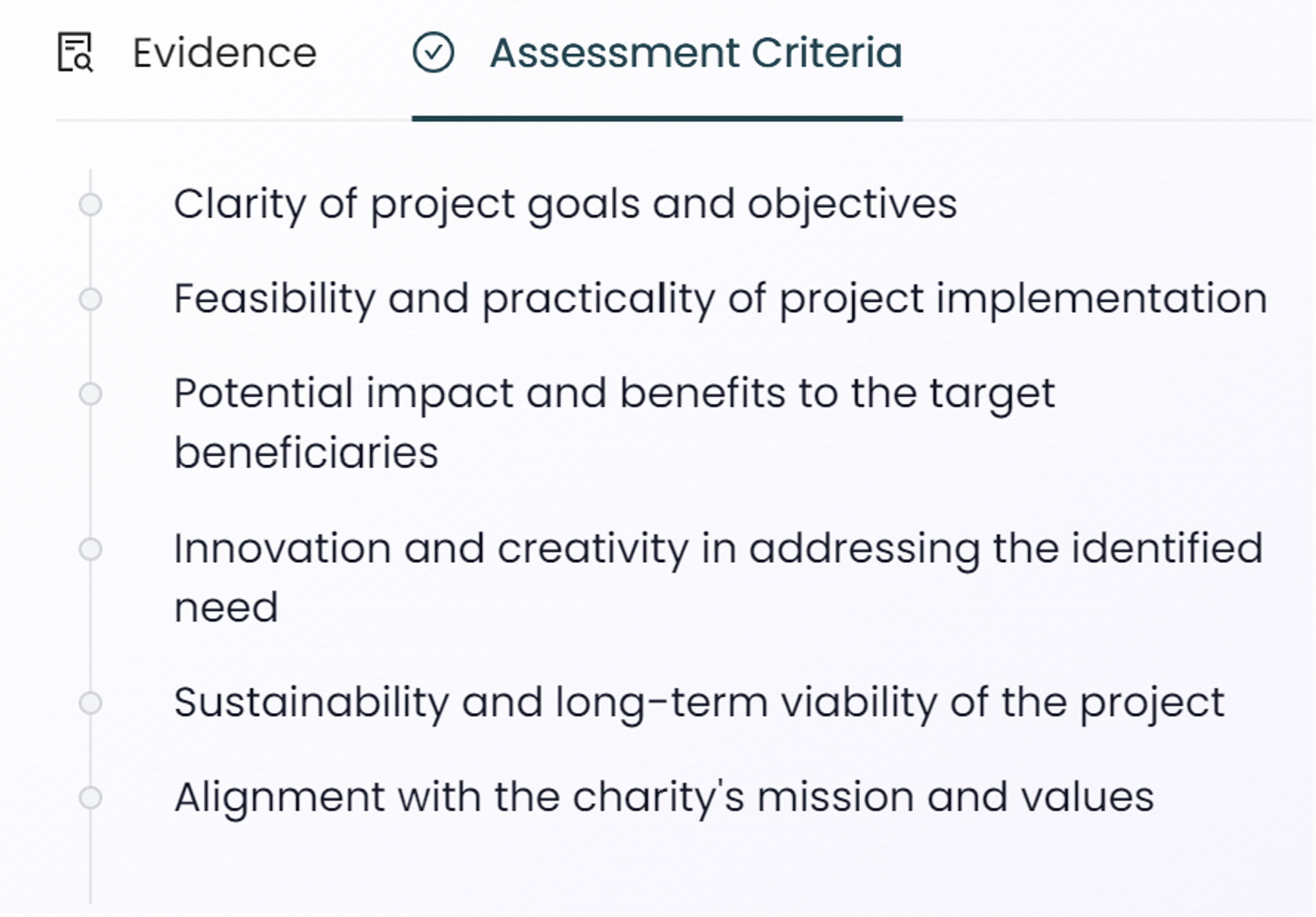
For each question we then ask the model to work out what the assessment criteria might be for each question, so we know what to include in the question and how best to structure the answers. This is based off the grant question and also the grant aims (from Step 1).
Step 4 - Suggesting the relevant evidence
Using steps 1 and 2 as guides, we then work out how what sort of evidence (case studies, needs etc) might best strengthen any answer. This is done for each question in the application. You can see the output of that on the left hand side of each answer.
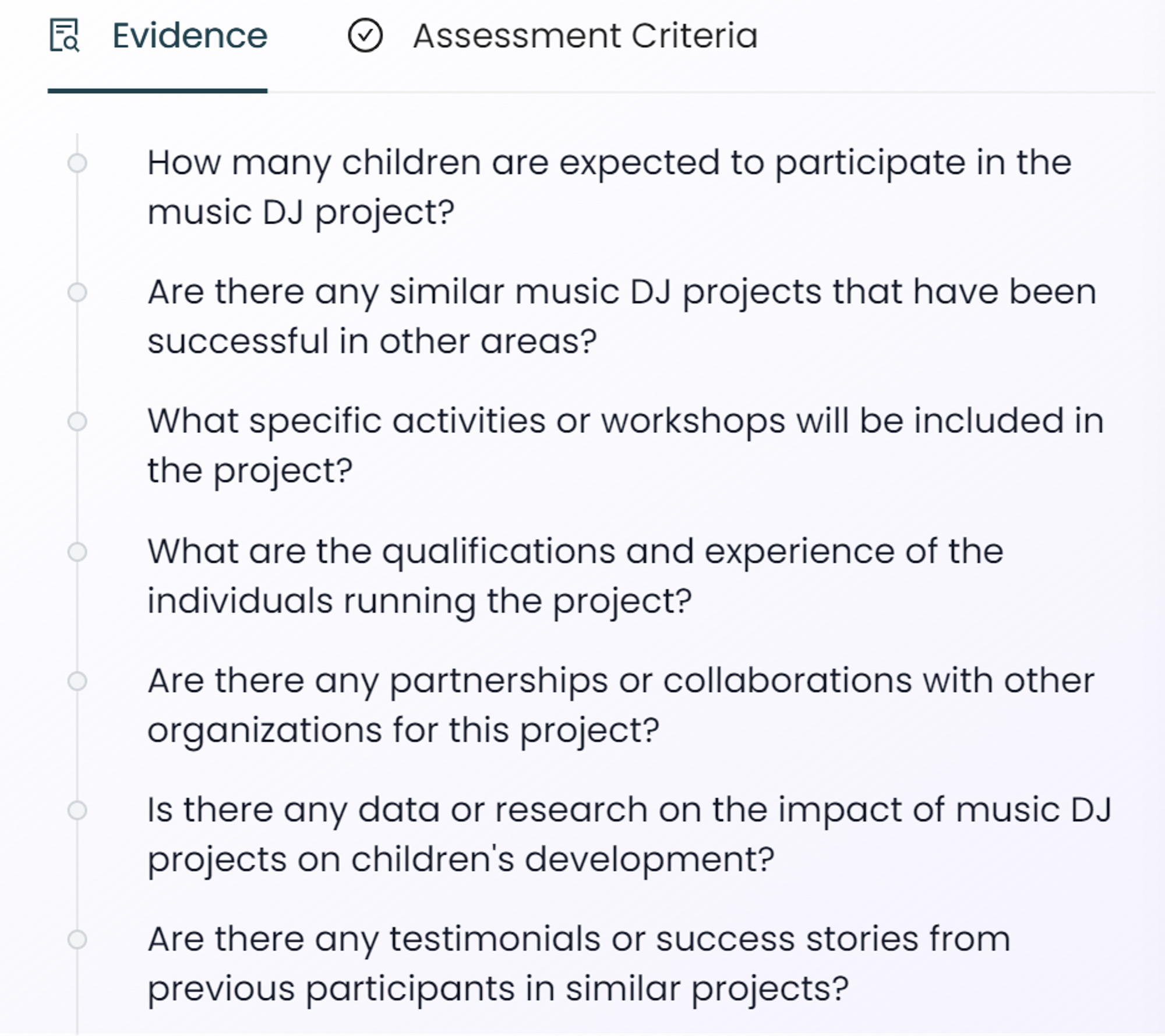
Step 5 - Searching the evidence
Step 3 gives us evidence to search for. We then search two sources. Any data you may have on Plinth (excluding the content of case notes) and any documents that you have uploaded to list all of the evidence that you have that could be used in each question. You can see what evidence we have used highlighted in green in the answers.

Step 6 - Answering the question
Now we know what the funder is looking for, what each question is asking and what the most relevant supporting evidence is for each question. We then combine all of that with some information from the charity commission, the information you have filled out about the project you want to get funding for and the question itself to create a mega prompt. This is then what we use to write the application for you. Because we have used a longer prompt with strict instructions from steps 1-5 the model is prevented from making anything up (like you may have experienced when you have asked ChatGPT a question).
What that means
All of that work means that what comes out of our grant writing tool is very personalised to your organisation, your project, and the grant that you are applying for, which allows you to spend less time applying for grants and more time focussing on your work.
Any other questions?
If you have any other questions, feel free to drop us an email at hello@plinth.org.uk.
